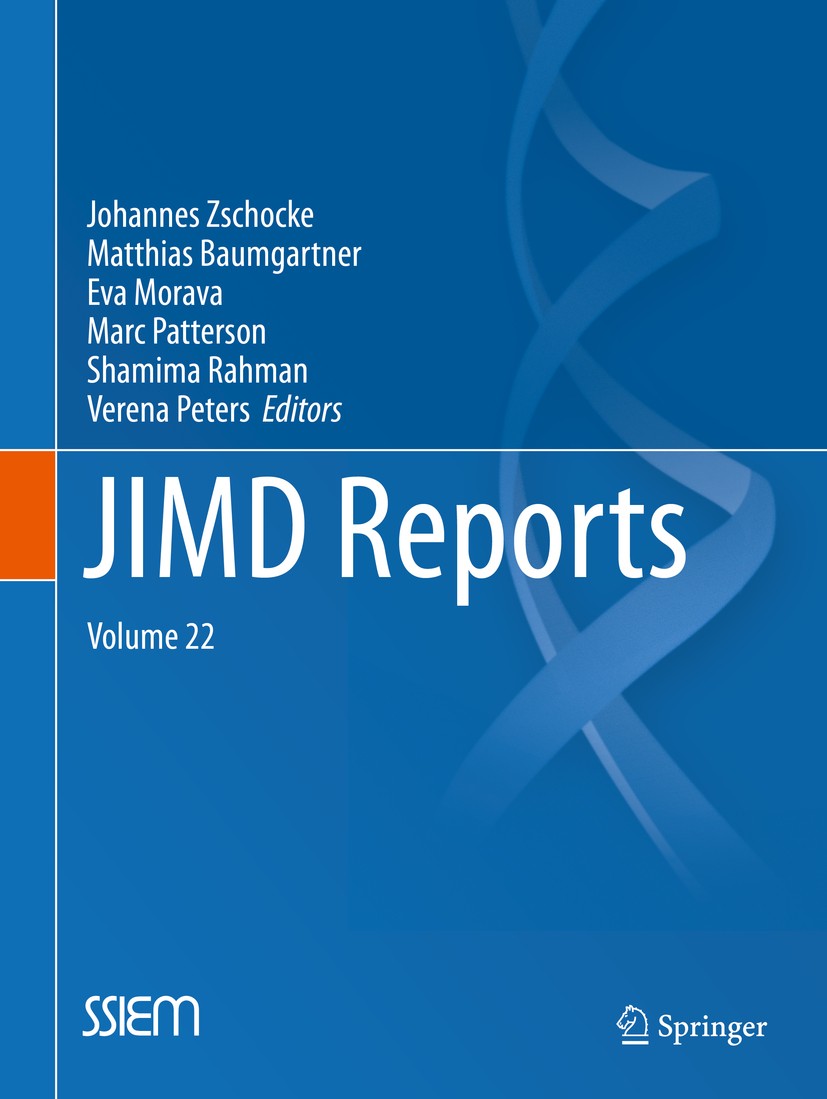| 书目名称 | JIMD Reports, Volume 22 | | 编辑 | Johannes Zschocke,Matthias Baumgartner,Verena Pete | | 视频video | http://file.papertrans.cn/501/500060/500060.mp4 | | 概述 | Unique collection of case and research reports on rare metabolic disorders.Contains unusual or previously unrecorded features relevant to metabolic disorders.All contributions rigorously peer-reviewed | | 丛书名称 | JIMD Reports | | 图书封面 |  | | 描述 | JIMD Reports publishes case and short research reports in the area of inherited metabolic disorders. Case reports highlight some unusual or previously unrecorded feature relevant to the disorder or serve as an important reminder of clinical or biochemical features of a Mendelian disorder. | | 出版日期 | Book 2015 | | 关键词 | Mendelian disorder; endocrinology; inherited metabolic diseases; medical genetics; pediatrics; metabolic | | 版次 | 1 | | doi | https://doi.org/10.1007/978-3-662-47453-2 | | isbn_softcover | 978-3-662-47452-5 | | isbn_ebook | 978-3-662-47453-2Series ISSN 2192-8304 Series E-ISSN 2192-8312 | | issn_series | 2192-8304 | | copyright | SSIEM and Springer-Verlag Berlin Heidelberg 2015 |
The information of publication is updating

书目名称JIMD Reports, Volume 22影响因子(影响力)

书目名称JIMD Reports, Volume 22影响因子(影响力)学科排名

书目名称JIMD Reports, Volume 22网络公开度

书目名称JIMD Reports, Volume 22网络公开度学科排名

书目名称JIMD Reports, Volume 22被引频次

书目名称JIMD Reports, Volume 22被引频次学科排名

书目名称JIMD Reports, Volume 22年度引用

书目名称JIMD Reports, Volume 22年度引用学科排名

书目名称JIMD Reports, Volume 22读者反馈

书目名称JIMD Reports, Volume 22读者反馈学科排名

|
|
|
 |Archiver|手机版|小黑屋|
派博传思国际
( 京公网安备110108008328)
GMT+8, 2025-11-12 07:55
|Archiver|手机版|小黑屋|
派博传思国际
( 京公网安备110108008328)
GMT+8, 2025-11-12 07:55


